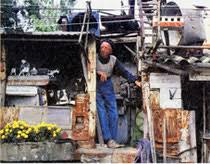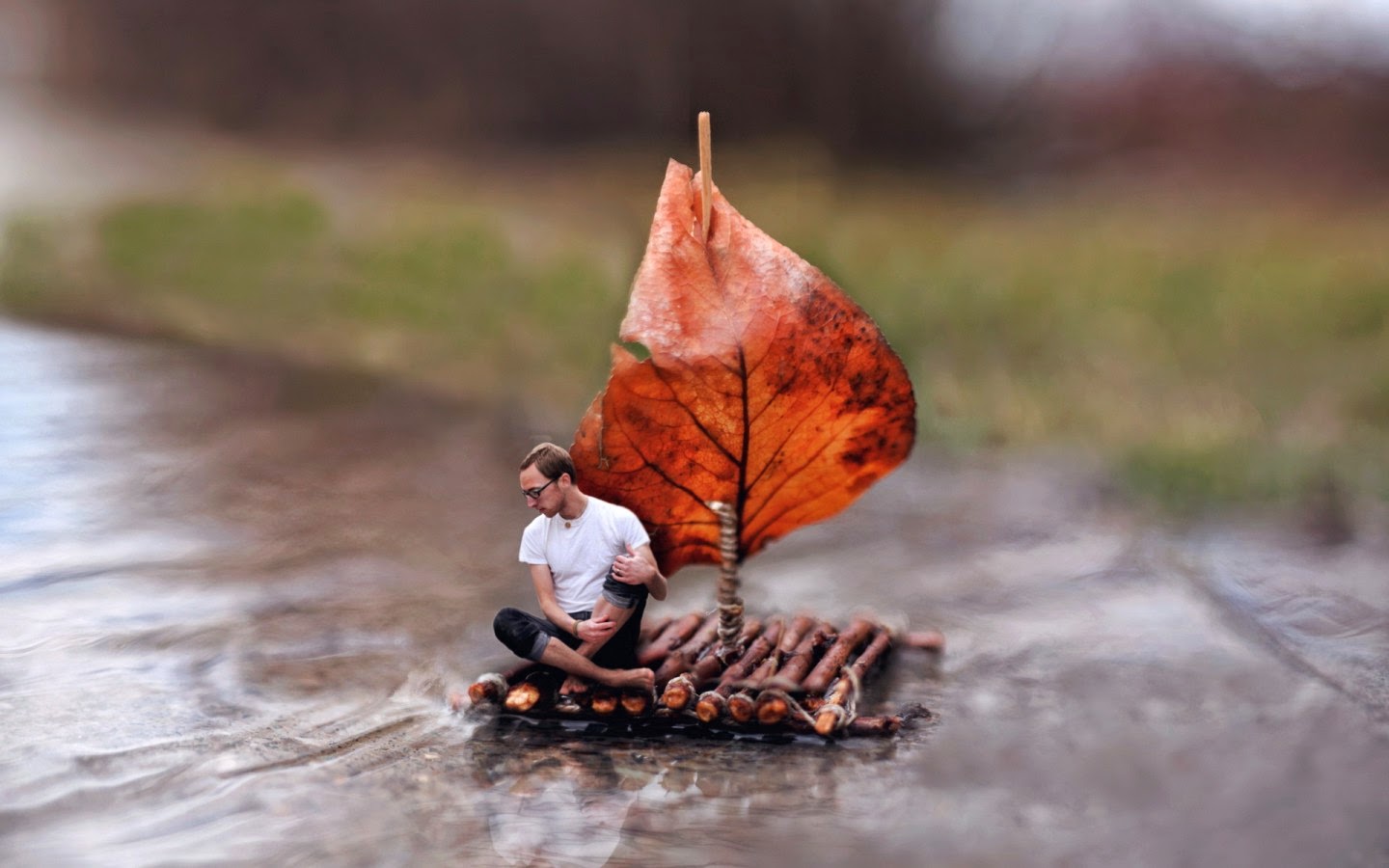The unwritten history of art is in the hands of the original
artists… the so-called ‘folk artists’
Untrained, making out of a
passion for making, often divinely inspired or working within the limits of
availablematerials with the currency of time and patience.
The constructions begin at the scale of the toy. A miniature
world then evolves into constructions within a house and then takes to the yard
as well. A new world is created to dispel the loneliness and isolation of an
artist that just does not fit into societal norms.
In the little village of Dicy, France, a cow herder named Pierre Avesard (1902-1992), less formally known as “Petit Pierre”, built an array of mechanical constructions, a mobile set of wood and metal figures built with canned cans and other waste materials. It has a replica of a 30 foot high Eiffel Tower, an atom of giant molecule, flowers and metal plants among other fantastic objects.
Petit Pierre liked to say he was born before he was planned.
Without even the hole of the ear, therefore deaf and half blind, he was
entrusted with the “trade of the innocent” … a pastor. The invasion of the
machines in the life of man left hem perplexed as he spent his days analyzing
the movement of the gadgets with which he was fond of. Lonely and fascinated by
the speed to which the world changed, he began to build this carousel that
still today continues to spin with deafening sounds of gears, pulleys, metal
parts screeching and turning to animate his assemblage of kinetic toys.
The focal point of his
creations is a large merry-go-round in the middle of his house and yard of
metal
madness. This
carnival-esque attraction is fully functioning and carries little metal
passengers in the forms of animals, people, buses, trains, and airplanes - all
of which circle around wires and tracks at the turn of switch. This entire
construct is automated and is controlled by signal boxes that Pierre had built
himself.
What is most
impressive is the dedication, as well as the lack of formal education that went
into creating this project. Being a farmer for most of his life, Pierre spent
little time in school and a lot of time working on his metal projects. He began
working on this bizarre miniature wonderland in 1937 and did not finish until
1974.
In 1982 , the menagerie
was saved from destruction by Alain
Bourbonnais, artist and collector, his wife and some others , who disassembled
, moved and restored the structure in the garden of a place which a year after
would become La Fabuloserie. The peculiar museum Bourbonnais opened to display
his vast personal collection of Outsider Art is still open in the summer ,
offering to Petit Pierre’s ménagerie a second life.






































































